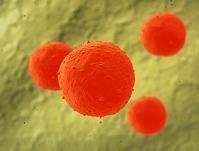Advertisment
BTS 2013 Report – Engineering transplantable kidneys from stem cells: progress so far

by Maria Dalby reporting on the presentation by Jamie Davies, University of Edinburgh. Using stem cells to engineer functioning human kidneys that can be used for transplantation remains a distant prospect; however, progress is being made every day which brings it a bit closer. Professor Jamie Davies from Edinburgh presented an overview of the two main avenues of research and the most recent achievements in terms of tissue viability and function.
Transplantation of donated kidneys is the gold-standard treatment option for end-stage renal disease. However, not only is this option limited by a severe lack of available organs – it also represents a major procedure for the patient. In his presentation, Professor Davies outlines two alternatives for engineering kidney structures from stem cells to overcome these limitations.
The first alternative involves injecting stem cells into the declining kidney before it reaches its end stage, stem cells that have been programmed to become kidney cells and are capable of either taking over some or all of the secretory function of the kidney, or helping the ailing kidney to regenerate itself. This involves two major challenges: to induce the stem cells to assume the function of a mature kidney, and – something which is not always widely acknowledged in the scientific community – to develop an assay to determine that this has actually been achieved. Whilst cultured stem cells may readily be injected into tissue, they tend to stay together in a cluster rather than dispersing and forming renal tissue (1). A more optimal way of introducing the stem cells into the tissue to be regenerated would be to prepare a suspension mixture to ensure that the stem cells are adequately dispersed from the outset.
The first attempts in Professor Davies’ laboratory of injecting a simple suspension into mouse kidneys failed – the lack of normal mammal cell survival signals induced rapid apoptosis amongst the injected stem cells. Further experiments revealed that inhibition of rho kinase prevented this apoptosis and the injected stem cells were shown to develop into near-normal looking branches and nephrons that are capable of switching on all critical cell types (2). However, instead of forming a single collecting duct like the ureter in the normal kidney, the engineered cells formed lots of tiny tree structures that would not have been capable of normal function. The research continued with the use of human amniotic fluid stem cells (hAFSCs), as these are known to incorporate well into both stroma and epithelium and are capable of switching on markers such as Pax2 and megalin (3). Using hAFSCs has also provided a system for testing the ability of the stem cells to make kidney tissue (Unbekandt et al, in press).
The second line of enquiry is whether individual cells that have been brought together to create a tissue, also can be induced to make a whole organ. Pioneering work has been done on the one hand to re-programme stem cells to make kidney structures, and on the other hand to introduce foetal kidneys into adult animals for maturation in situ. The challenge is, of course, that the human kidney is a very complex structure to try to recreate. Researchers at Professor Davies’ lab have created a method for re-aggregating stem cells so that they form a single collecting duct (4), show differentiation between cortex and medulla to allow the loop of Henley to be formed (5), and create a functioning blood supply (Guangping et al, in press). The latter feature has also been confirmed in in vivo experiments (6). In the near future, Professor Davies’ team will continue to develop their system for creating and testing the biological function of engineering kidneys in a range models that are relevant for human application.
1. Vigneau C, Polgar K, Striker G, Elliott J, Hyink D, Weber O, et al. Mouse embryonic stem cell-derived embryoid bodies generate progenitors that integrate long term into renal proximal tubules in vivo. Journal of the American Society of Nephrology : JASN. 2007;18(6):1709-20. Epub 2007/05/04.
2. Unbekandt M, Davies JA. Dissociation of embryonic kidneys followed by reaggregation allows the formation of renal tissues. Kidney international. 2010;77(5):407-16. Epub 2009/12/18.
3. Siegel N, Rosner M, Unbekandt M, Fuchs C, Slabina N, Dolznig H, et al. Contribution of human amniotic fluid stem cells to renal tissue formation depends on mTOR. Human molecular genetics. 2010;19(17):3320-31. Epub 2010/06/15.
4. Ganeva V, Unbekandt M, Davies JA. An improved kidney dissociation and reaggregation culture system results in nephrons arranged organotypically around a single collecting duct system. Organogenesis. 2011;7(2):83-7. Epub 2011/03/10.
5. Chang CH, Davies JA. An improved method of renal tissue engineering, by combining renal dissociation and reaggregation with a low-volume culture technique, results in development of engineered kidneys complete with loops of henle. Nephron Experimental nephrology. 2012;121(3-4):e79-85. Epub 2012/12/14.
6. Xinaris C, Benedetti V, Rizzo P, Abbate M, Corna D, Azzollini N, et al. In vivo maturation of functional renal organoids formed from embryonic cell suspensions. Journal of the American Society of Nephrology : JASN. 2012;23(11):1857-68. Epub 2012/10/23.





